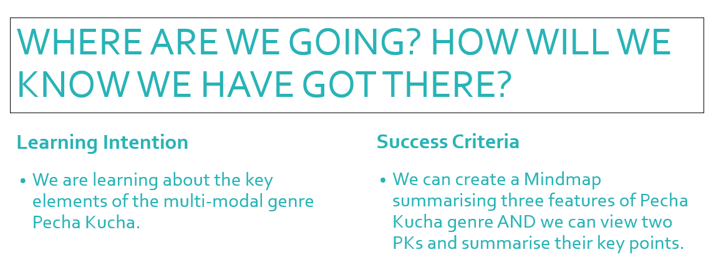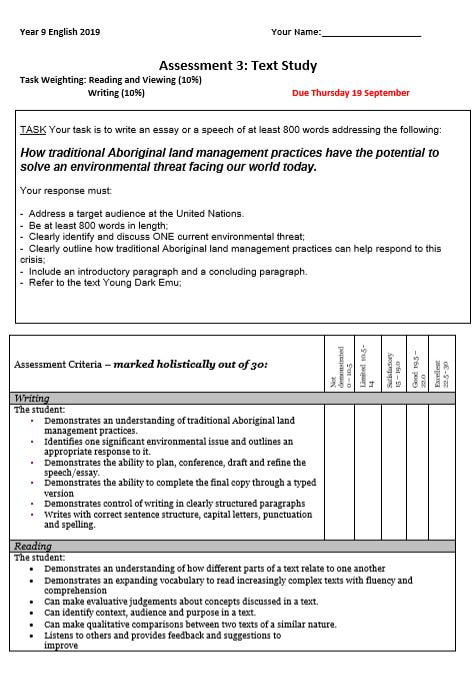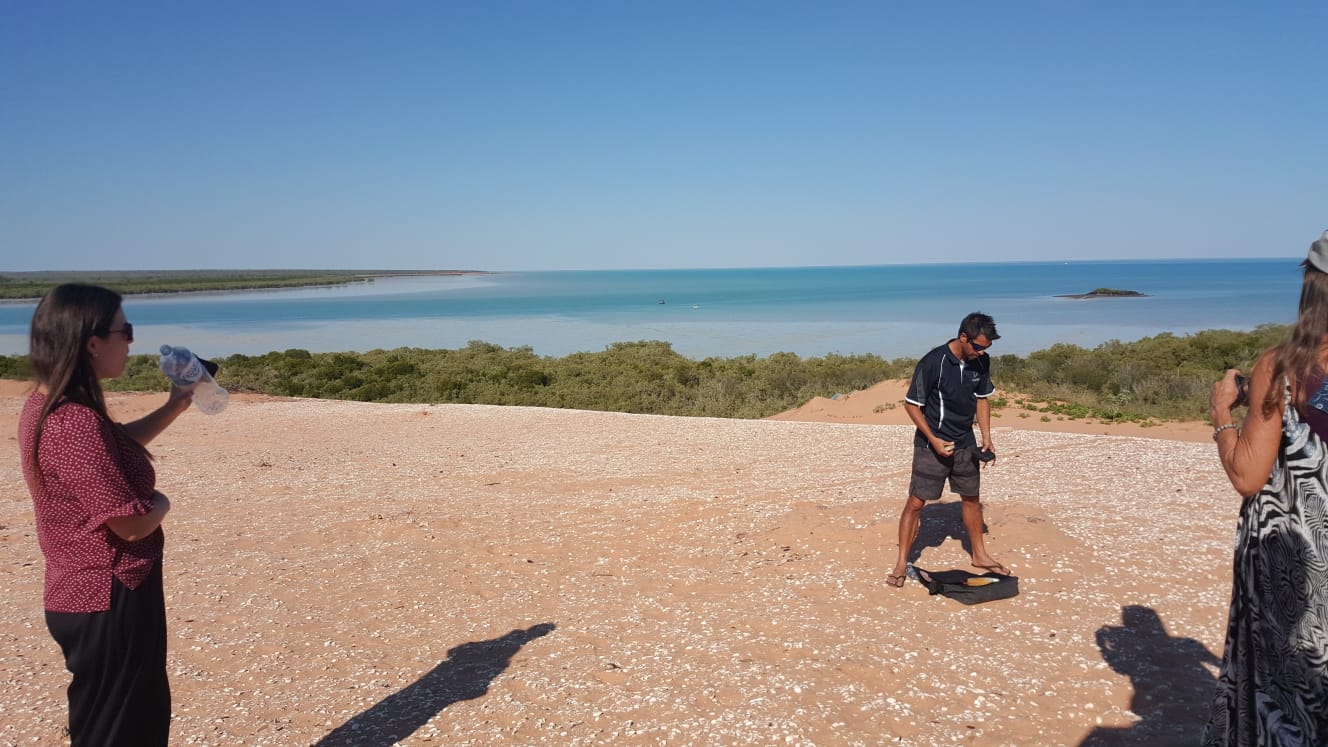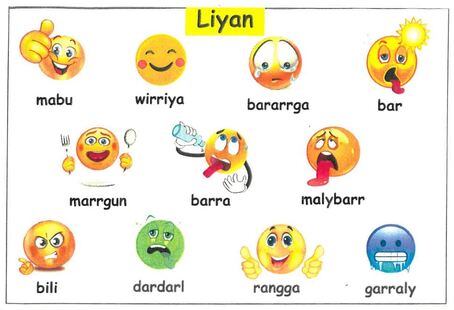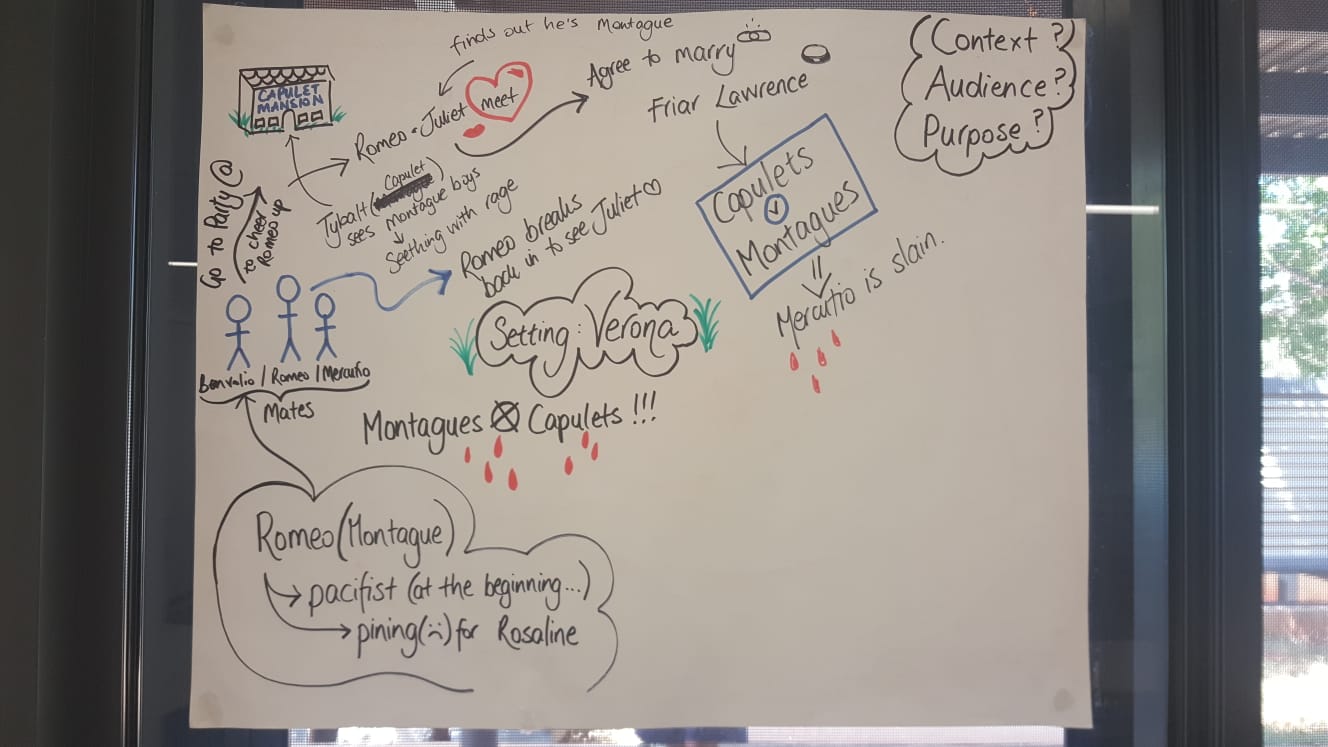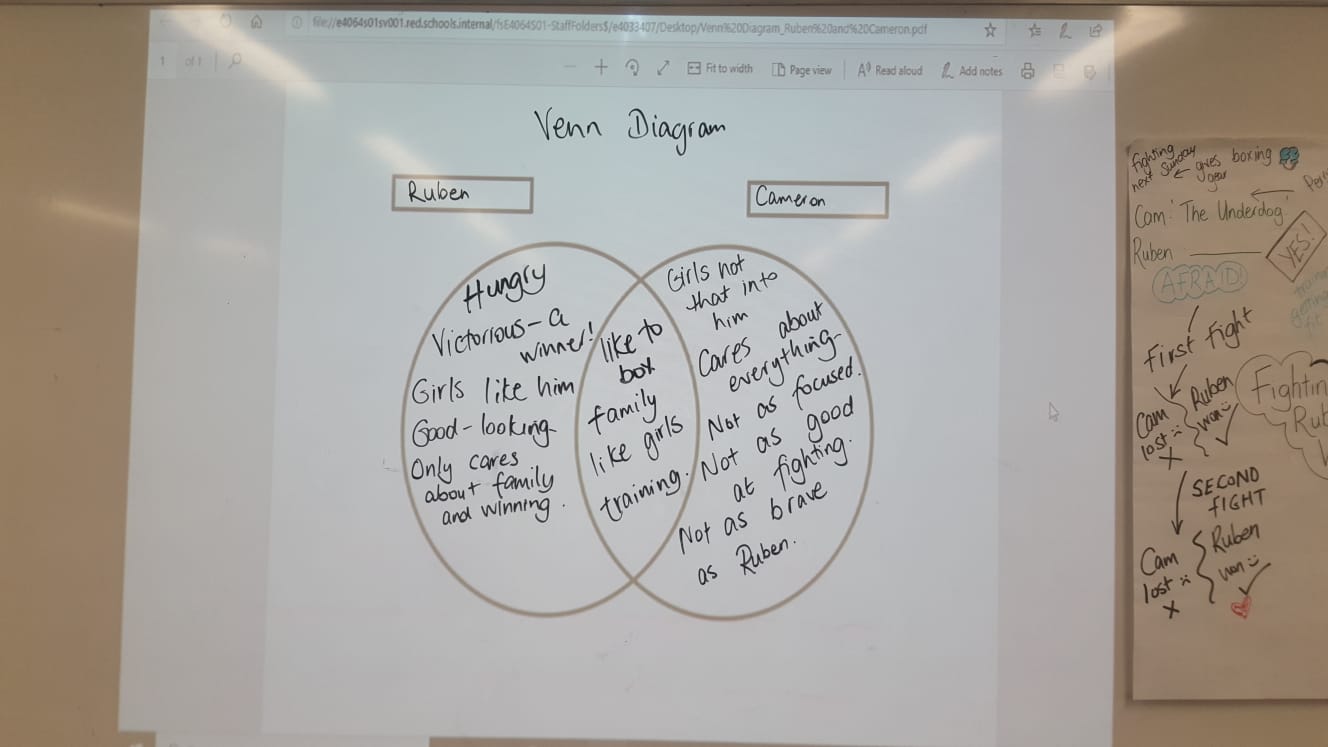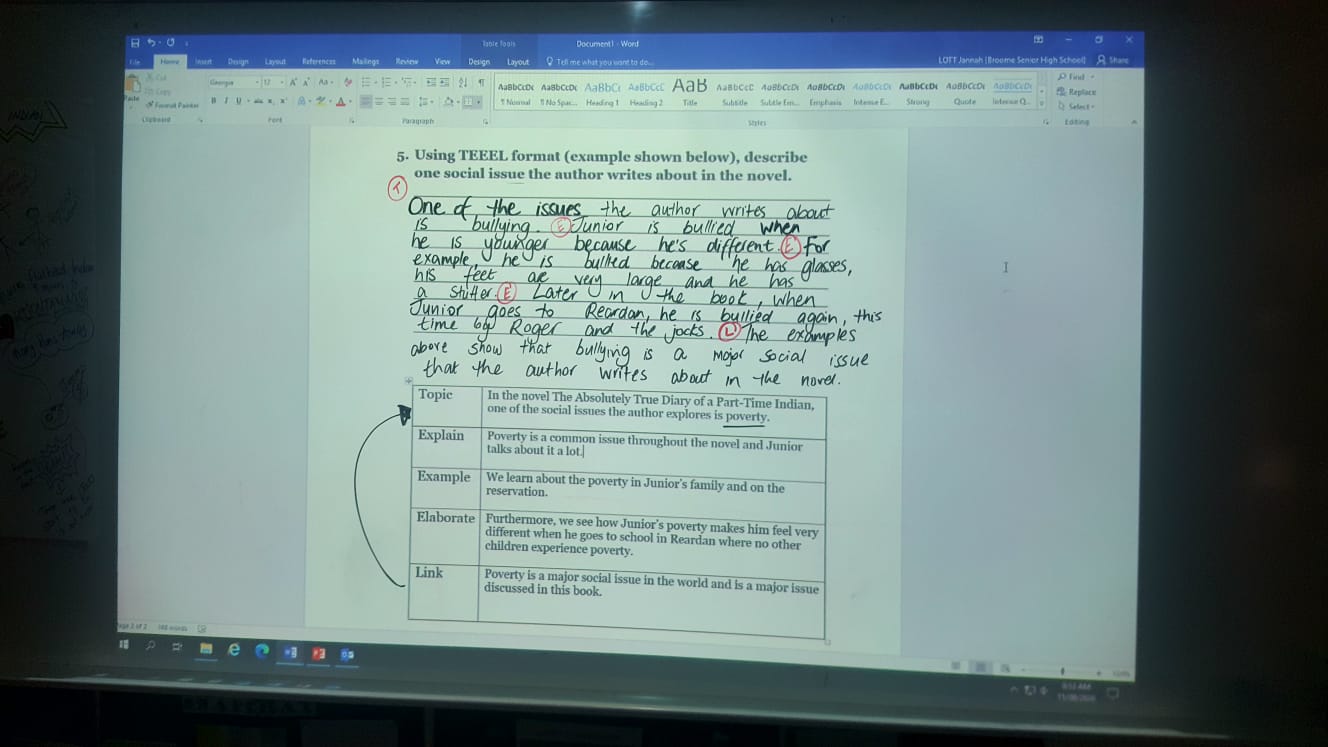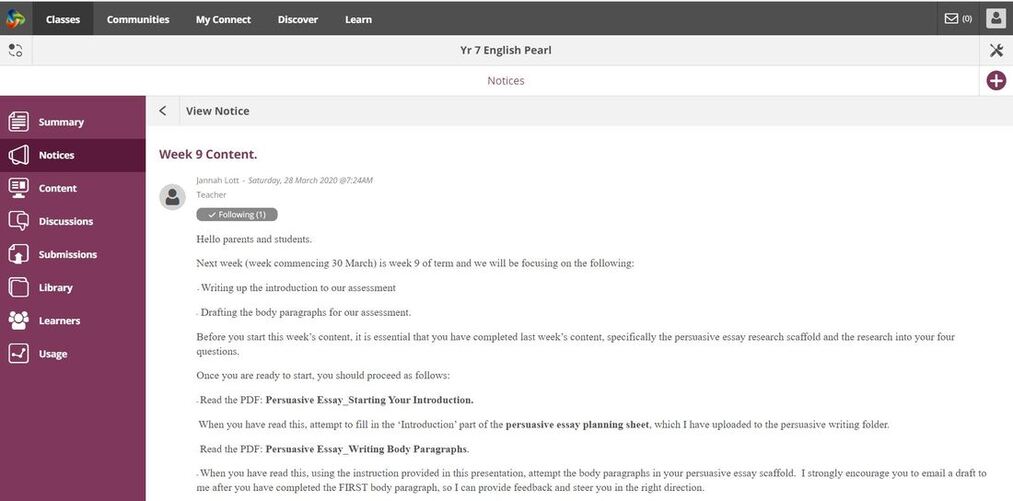Focus area 2.1. Content and teaching strategies of the teaching area.
Apply knowledge of the content and teaching strategies of the teaching area to develop engaging teaching activities.
Examples shown here and here demonstrate my capacity to use explicit instruction to deliver language and literacy lessons to a cohort of Year 9 students. Explicit instruction has been shown in research to have an effect size of 0.57 on student achievement.
The example shown here, demonstrates my capacity to implement peer-feedback as a teaching strategy with a cohort of Year 7 students. According to research by Hattie, peer feedback has an effect size of 0.80, which is significant.
Scaffolding is another teaching practice with a high effect size and I use it daily as a core component of practice. Examples of these include checklists, as shown here, and scaffolds as shown here.
Apply knowledge of the content and teaching strategies of the teaching area to develop engaging teaching activities.
Examples shown here and here demonstrate my capacity to use explicit instruction to deliver language and literacy lessons to a cohort of Year 9 students. Explicit instruction has been shown in research to have an effect size of 0.57 on student achievement.
The example shown here, demonstrates my capacity to implement peer-feedback as a teaching strategy with a cohort of Year 7 students. According to research by Hattie, peer feedback has an effect size of 0.80, which is significant.
Scaffolding is another teaching practice with a high effect size and I use it daily as a core component of practice. Examples of these include checklists, as shown here, and scaffolds as shown here.

Focus area 2.2 . Content selection and organisation.
Organise content into coherent, well-sequenced learning and teaching programs.
During my time teaching secondary English at Broome Senior High School, I have been involved in organising content into coherent, well-sequenced learning and teaching programs for students across a range of cohorts through Years 7 through 12. The example shown here is a Year 9 unit, co-designed with the school Head of Learning Area, which demonstrates my ability to develop a well-sequenced unit of learning. Supporting this unit of learning is an assessment schedule reflecting a back-ward mapping approach to planning and teaching.
Further examples of high quality, coherent and well-sequenced learning and teaching programs are shown in this Year 10 English program and this Year 12 English as an Additional Language or Dialect program respectively. Consistent with principles of visible learning, I have sought ensure students are familiar with and understand learning programs and to that end, have created student-friendly overviews of teaching programs, which are provided to students and their families at the start of each semester. These unit overviews were provided to students for the aforementioned Year 10 and Year 12 programs.
In addition to organising content from the English Curriculum into learning and teaching programs, I also created and delivered additional learning programs in other areas. The example shown here, is an overview of a ten week, term-long unit I ran with four different cohorts in each of four terms during 2021. This unit sought to teach Year 8 students about brain physiology and teach some practical skills around mindfulness and self-regulation.
Organise content into coherent, well-sequenced learning and teaching programs.
During my time teaching secondary English at Broome Senior High School, I have been involved in organising content into coherent, well-sequenced learning and teaching programs for students across a range of cohorts through Years 7 through 12. The example shown here is a Year 9 unit, co-designed with the school Head of Learning Area, which demonstrates my ability to develop a well-sequenced unit of learning. Supporting this unit of learning is an assessment schedule reflecting a back-ward mapping approach to planning and teaching.
Further examples of high quality, coherent and well-sequenced learning and teaching programs are shown in this Year 10 English program and this Year 12 English as an Additional Language or Dialect program respectively. Consistent with principles of visible learning, I have sought ensure students are familiar with and understand learning programs and to that end, have created student-friendly overviews of teaching programs, which are provided to students and their families at the start of each semester. These unit overviews were provided to students for the aforementioned Year 10 and Year 12 programs.
In addition to organising content from the English Curriculum into learning and teaching programs, I also created and delivered additional learning programs in other areas. The example shown here, is an overview of a ten week, term-long unit I ran with four different cohorts in each of four terms during 2021. This unit sought to teach Year 8 students about brain physiology and teach some practical skills around mindfulness and self-regulation.
Focus area 2.3. Curriculum, assessment and reporting
Design and implement learning and teaching programs using knowledge of curriculum, assessment and reporting requirements.
This unit of learning and corresponding assessment schedule for a Year 9 cohort, demonstrate my capacity to create a teaching program using knowledge of curriculum, assessment and reporting requirements. This unit was developed using a backward-mapping approach, with theoretical underpinnings in McTighe and Wiggins' Understanding by Design approach to program development, which demands that educators begin by considering the learning outcomes, THEN determine ways to assess progression towards these outcomes and finally design learning experiences accordingly. Examples of assessments which correspond with the unit shown above are shown here and here.
In keeping with best practice, I have delivered common assessment tasks to students, for the purposes of moderation, as shown here. To improve my knowledge and skills around assessment and reporting, I have signed up to participate in state-wide moderation led by SCSA, although this is currently postponed due to the COVID-19 pandemic.
Design and implement learning and teaching programs using knowledge of curriculum, assessment and reporting requirements.
This unit of learning and corresponding assessment schedule for a Year 9 cohort, demonstrate my capacity to create a teaching program using knowledge of curriculum, assessment and reporting requirements. This unit was developed using a backward-mapping approach, with theoretical underpinnings in McTighe and Wiggins' Understanding by Design approach to program development, which demands that educators begin by considering the learning outcomes, THEN determine ways to assess progression towards these outcomes and finally design learning experiences accordingly. Examples of assessments which correspond with the unit shown above are shown here and here.
In keeping with best practice, I have delivered common assessment tasks to students, for the purposes of moderation, as shown here. To improve my knowledge and skills around assessment and reporting, I have signed up to participate in state-wide moderation led by SCSA, although this is currently postponed due to the COVID-19 pandemic.
Focus area 2.4. Understand and respect Aboriginal and Torres Strait Islander people to promote reconciliation between Indigenous and non-Indigenous Australians.
Provide opportunities for students to develop understanding of and respect for Aboriginal and Torres Strait Islander histories, cultures and languages.
As at March, 2021, Broome Senior High School had a student body that included 36% students of Aboriginal and/or Torres Strait Islander Background. The school also houses Clontarf Academy and Broome Girls Academy (subsequently known as Stars Academy), with both academies functioning to address and change the educational disadvantage disproportionately faced by Aboriginal boys and girls respectively. The promotion of reconciliation between Indigenous and non-Indigenous Australians is a priority within the school and this is reflected in the staff body which includes a Program Manager for Aboriginal and Torres Strait Islander Education and a number of teaching and support staff who identify as Indigenous.
As part of my commitment to Aboriginal education, in Semester 1 2020, I submitted an expression of interest to join the school's Aboriginal Education Committee, and was accepted as a member of that team for the 2020 academic year. From that time, in addition to being a general member of the Committee, I became the minute-taker for the group and provided secretariat support in that regard.
As class teacher, I have provided opportunities for students to develop and understanding of and respect for Aboriginal and Torres Strait Islander histories, cultures and languages in many ways. This included assigning texts and creating assignments which explicitly explored the value and importance of Indigenous cultures and history, as in the examples shown below which relate to a sequence of study with a Year 9 class.
Our classroom library, which I established to develop in my students a love of literature, contains a large number of titles from Indigenous authors, and documentaries we looked at during our Year 11 study of documentary conventions and racial vilification in sport, encouraged students to consider Indigenous perspectives.
I have participated in whole-of-learning area workshops on two-way learning, facilitated by the Head of Indigenous Education, designed to encourage teachers to work in partnership with Indigenous staff in a meaningful way. As shown in my professional learning log, I have heeded the advice of Indigenous educators and read texts that encouraged me to consider the perspective, strengths and values of Indigenous families I worked with and to always maintain high expectations for my Indigenous students.
Broome has a population of around 15,000 people, of which over 50% identify as Indigenous. We are fortunate to have many local Indigenous cultural referents including books, plays, music and films; this allowed us to use these cultural referents and incorporate them in our learning experiences.
Provide opportunities for students to develop understanding of and respect for Aboriginal and Torres Strait Islander histories, cultures and languages.
As at March, 2021, Broome Senior High School had a student body that included 36% students of Aboriginal and/or Torres Strait Islander Background. The school also houses Clontarf Academy and Broome Girls Academy (subsequently known as Stars Academy), with both academies functioning to address and change the educational disadvantage disproportionately faced by Aboriginal boys and girls respectively. The promotion of reconciliation between Indigenous and non-Indigenous Australians is a priority within the school and this is reflected in the staff body which includes a Program Manager for Aboriginal and Torres Strait Islander Education and a number of teaching and support staff who identify as Indigenous.
As part of my commitment to Aboriginal education, in Semester 1 2020, I submitted an expression of interest to join the school's Aboriginal Education Committee, and was accepted as a member of that team for the 2020 academic year. From that time, in addition to being a general member of the Committee, I became the minute-taker for the group and provided secretariat support in that regard.
As class teacher, I have provided opportunities for students to develop and understanding of and respect for Aboriginal and Torres Strait Islander histories, cultures and languages in many ways. This included assigning texts and creating assignments which explicitly explored the value and importance of Indigenous cultures and history, as in the examples shown below which relate to a sequence of study with a Year 9 class.
Our classroom library, which I established to develop in my students a love of literature, contains a large number of titles from Indigenous authors, and documentaries we looked at during our Year 11 study of documentary conventions and racial vilification in sport, encouraged students to consider Indigenous perspectives.
I have participated in whole-of-learning area workshops on two-way learning, facilitated by the Head of Indigenous Education, designed to encourage teachers to work in partnership with Indigenous staff in a meaningful way. As shown in my professional learning log, I have heeded the advice of Indigenous educators and read texts that encouraged me to consider the perspective, strengths and values of Indigenous families I worked with and to always maintain high expectations for my Indigenous students.
Broome has a population of around 15,000 people, of which over 50% identify as Indigenous. We are fortunate to have many local Indigenous cultural referents including books, plays, music and films; this allowed us to use these cultural referents and incorporate them in our learning experiences.
In keeping with my priority to understand and respect Aboriginal and Torres Strait Islander people and to promote reconciliation, I have continuously sought to respond to challenging behaviours in a culturally safe manner, by treating students with respect and in a space where they feel safe and valued. The case shown here, documents a case where two Year 9 students refused to attend class. I responded by convening a meeting with the students at Broome Girls Academy (BGA), a space they have ownership of, and with BGA support staff in attendance. The students were offered an opportunity to talk about the BGA values to which they, as members, aspire and discuss their behaviour within this context.
I have sought to expand my understanding of the cultural significance of the place in which I live and work, participating in local Aboriginal cultural tours (as shown in the image below) and - inspired by the work of Broome Senior High School's Culture Centre - using Yawuru language in the classroom. The image shown below (right), demonstrates how I have used Yawuru words a part of a check-in/check-out activity.
I have sought to expand my understanding of the cultural significance of the place in which I live and work, participating in local Aboriginal cultural tours (as shown in the image below) and - inspired by the work of Broome Senior High School's Culture Centre - using Yawuru language in the classroom. The image shown below (right), demonstrates how I have used Yawuru words a part of a check-in/check-out activity.
Focus area 2.5. Literacy and numeracy strategies.
Apply knowledge and understanding of effective teaching strategies to support literacy and numeracy achievement of students.
I have used a range of evidence-based teaching strategies in my lessons with students across all year levels. One image shown below (right) demonstrates my use of graphic organisers - venn diagrams in this case - to compare and contrast central characters in a Year 9 novel study. Another image below (left) demonstrates my use of mind maps to assist students to keep track of the plot of a text we studied.
Apply knowledge and understanding of effective teaching strategies to support literacy and numeracy achievement of students.
I have used a range of evidence-based teaching strategies in my lessons with students across all year levels. One image shown below (right) demonstrates my use of graphic organisers - venn diagrams in this case - to compare and contrast central characters in a Year 9 novel study. Another image below (left) demonstrates my use of mind maps to assist students to keep track of the plot of a text we studied.
Additional strategies have included 3-2-1 Chin It, as evidenced in the presentation shown here, which demonstrates how this strategy was used for a variety of purposes including to establish prior knowledge, check for understanding and elicit student opinions on a topic.
My professional reading log demonstrates my commitment to keeping abreast of evidence-based teaching strategies and this has been reflected in my classroom practice. One image shown below (right) demonstrates my use of joint construction to teach students how to write paragraphs. Another image below (left) demonstrates my commitment to providing students with an overview of the assessment process, in order that they can connect the purpose of daily lessons with the 'big picture' of the task.
My professional reading log demonstrates my commitment to keeping abreast of evidence-based teaching strategies and this has been reflected in my classroom practice. One image shown below (right) demonstrates my use of joint construction to teach students how to write paragraphs. Another image below (left) demonstrates my commitment to providing students with an overview of the assessment process, in order that they can connect the purpose of daily lessons with the 'big picture' of the task.
Focus area 2.6. Information and Communication Technology (ICT).
Use effective teaching strategies to integrate ICT into learning and teaching programs to make selected content relevant and meaningful.
The COVID-19 pandemic of 2020, provided the context by which ICT become an integral part of teaching practices. During this time, the Department of Education's portal Connect became one of the main ways to communicate with students and provide learning experiences using ICT. Screenshots shown below demonstrate some of the ways I used this portal. Further to the COVID pandemic, Connect has remained a core component of my teaching.
Use effective teaching strategies to integrate ICT into learning and teaching programs to make selected content relevant and meaningful.
The COVID-19 pandemic of 2020, provided the context by which ICT become an integral part of teaching practices. During this time, the Department of Education's portal Connect became one of the main ways to communicate with students and provide learning experiences using ICT. Screenshots shown below demonstrate some of the ways I used this portal. Further to the COVID pandemic, Connect has remained a core component of my teaching.
I have consistently sought to use ICT as a tool to engage students in their learning. One example of this is my regular use of programs such as Kahoot to provide opportunities for students to revise content covered. This has proven incredibly engaging and effective. An example shown here demonstrates my use of Kahoot to revise Tier 2 vocabulary taught during a Year 7 novel study of The Amber Amulet.
